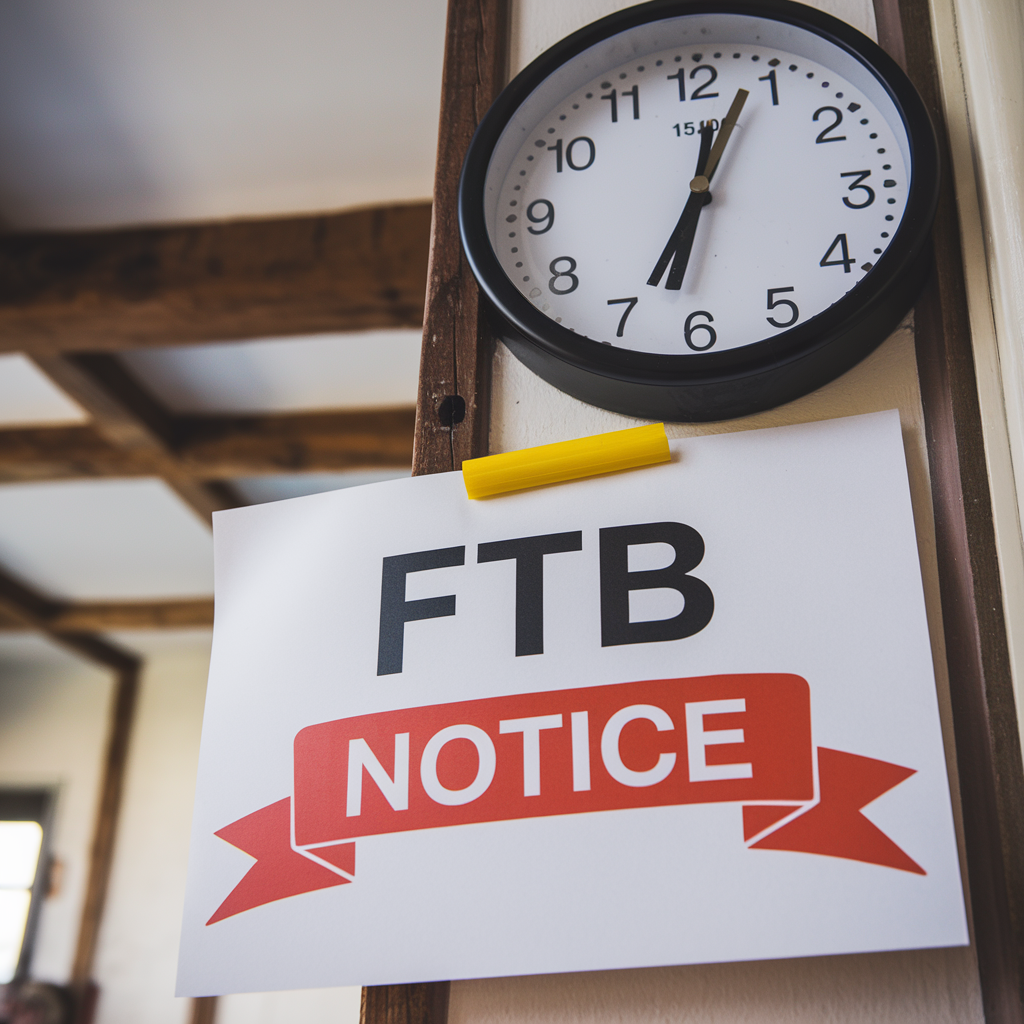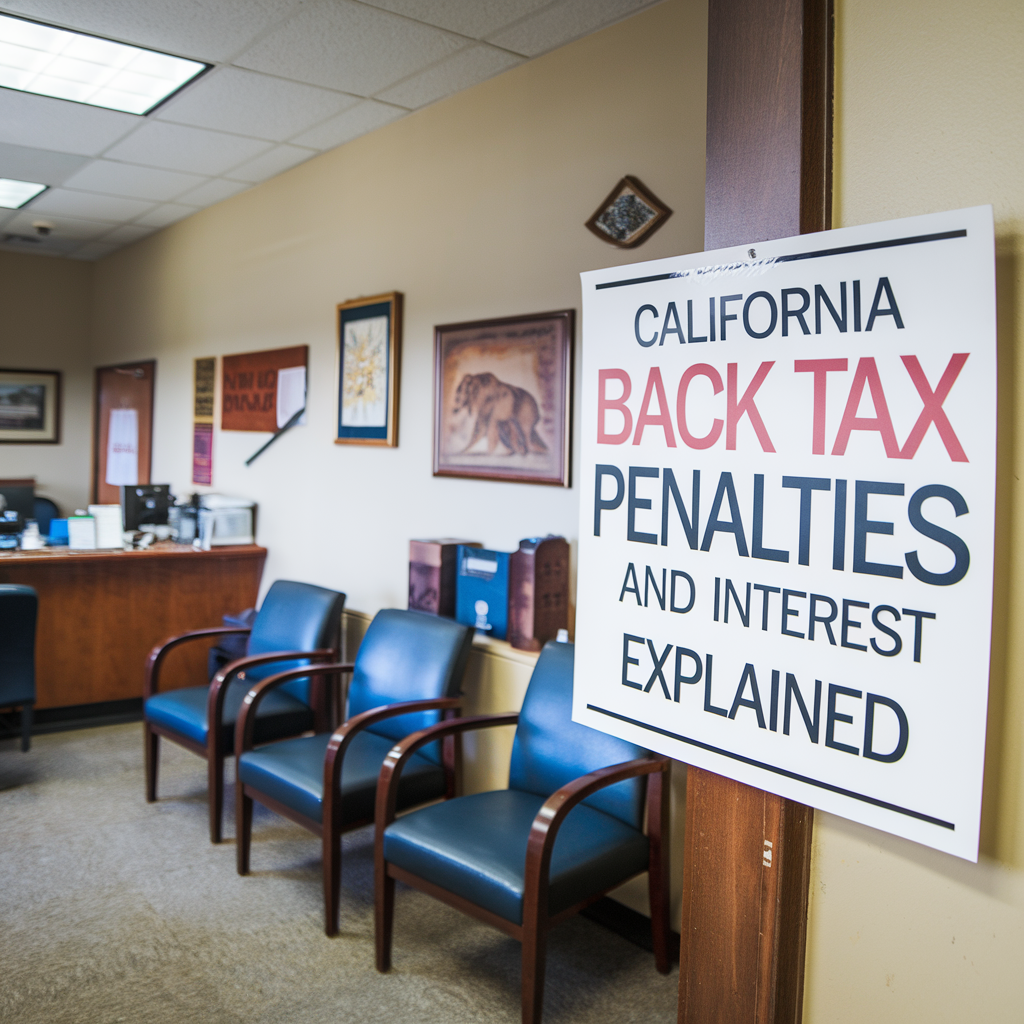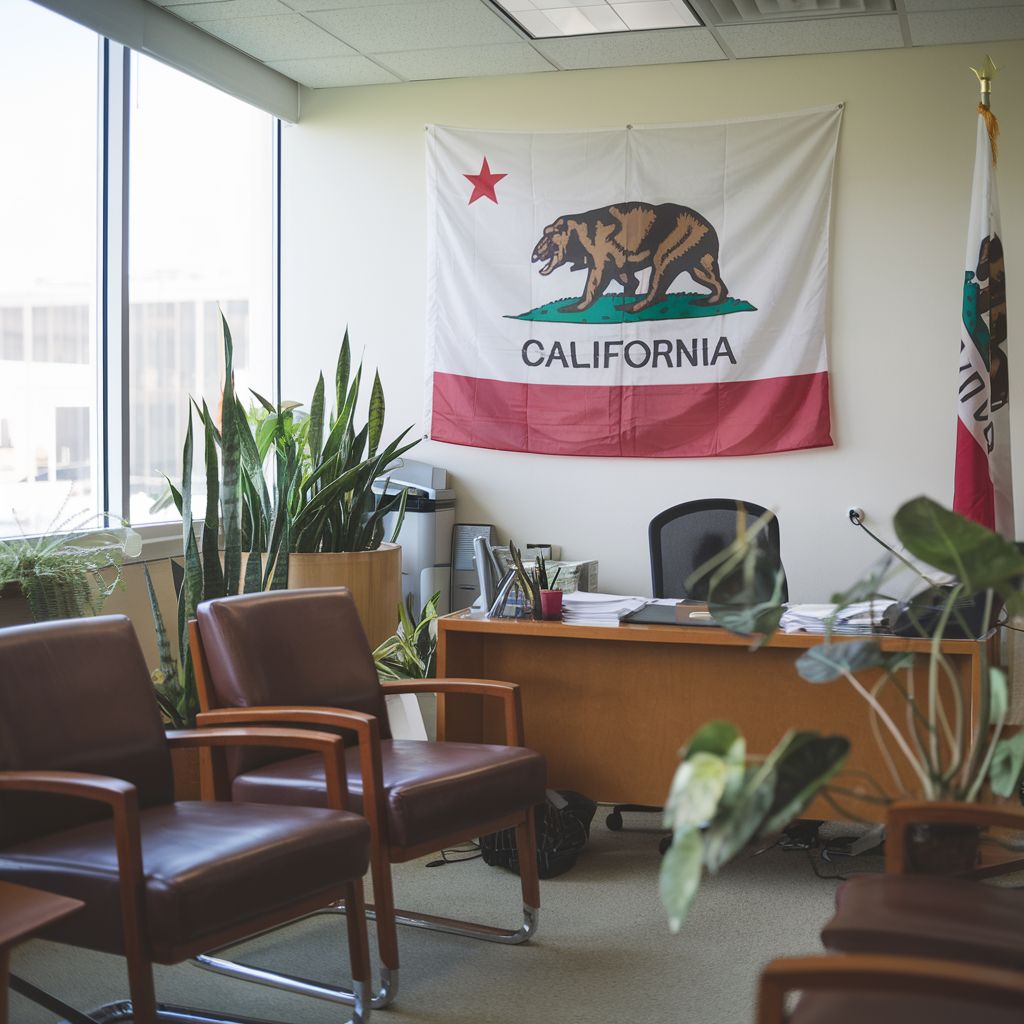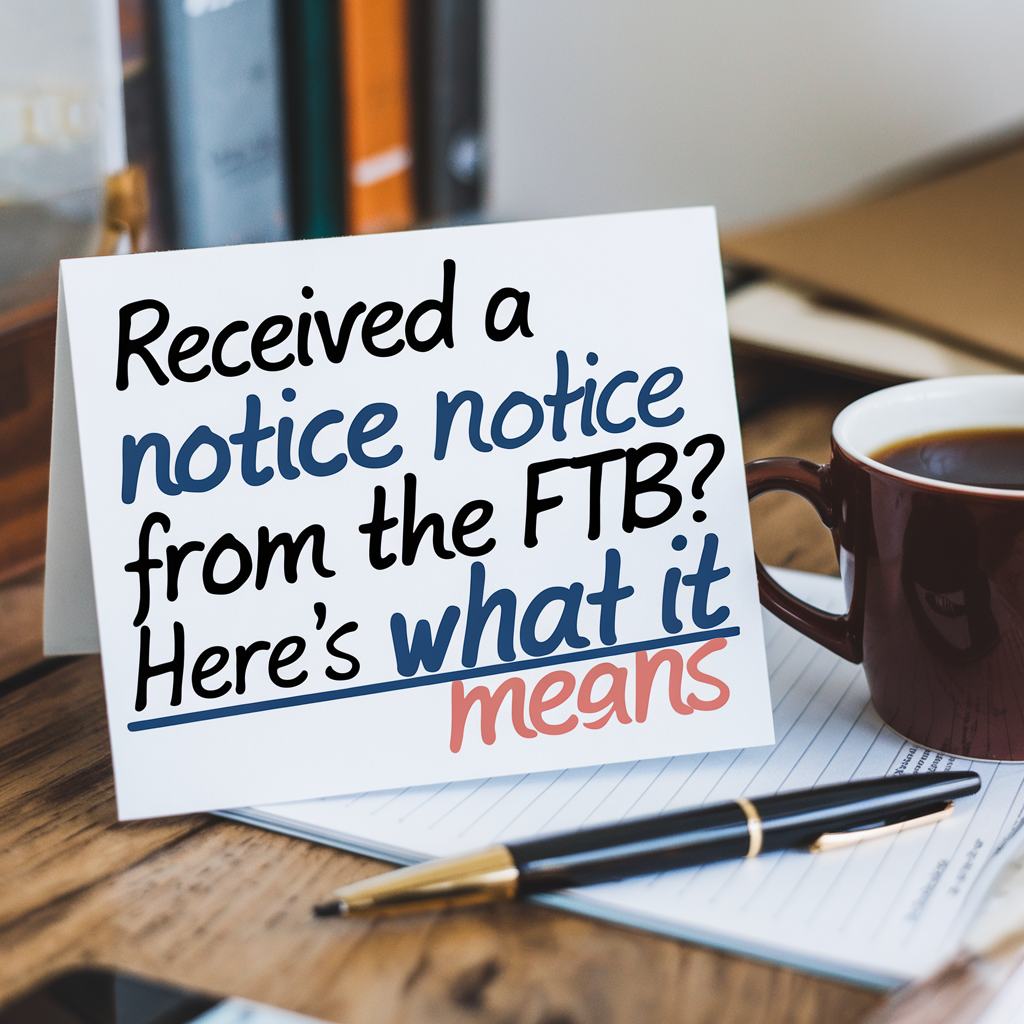FTB Collections Process: A Guide for California Taxpayers

Introduction: The FTB Doesn’t Wait Around
If you’re behind on your California state taxes, there’s one agency you’ll hear from quickly: the Franchise Tax Board (FTB). While the IRS is known for its structured approach to collections, the FTB is known for being fast, automated, and aggressive.
Whether you owe a few thousand or a six-figure balance, the FTB has powerful tools to collect — including bank levies, wage garnishments, tax liens, and more. And if you’re in Orange County, they’re particularly active in high-income areas like Irvine, Newport Beach, and Santa Ana.
This guide explains every stage of the FTB collections process and how to protect yourself or your business before your income is affected.
📌 Quick Overview: FTB Collections Timeline
- Notice of Tax Due
- Demand for Payment
- Notice of Proposed Assessment (NPA)
- Final Notice Before Levy
- Collections Enforcement (levy, lien, garnishment)
Each stage escalates if you don’t respond — fast.
🔍 Step-by-Step: How the FTB Collects Tax Debt
1. Notice of Tax Due
This is your first warning — you either filed a return with a balance or the FTB believes you owe from a prior year.
It includes:
- Amount due
- Due date
- Penalties and interest
What to do:
If you can’t pay, contact a tax professional
before it becomes a Demand for Payment.
2. Demand for Payment
If the balance remains unpaid, you’ll get a more aggressive Demand for Payment.
This notice often includes:
- Threats of levy or lien
- A specific deadline to pay or respond
- Language like “further action may be taken without additional notice”
Don’t ignore this. Once this notice is issued, you’re flagged for potential enforcement.
3. Notice of Proposed Assessment (NPA)
If the FTB determines you owe more than you reported, they’ll issue a Notice of Proposed Assessment. This is common if:
- You didn’t file a return
- You underreported income
- You triggered an audit
You have 60 days to protest.
👉 Learn what triggers a California FTB audit
4. Final Notice Before Levy
This is the final warning before bank levies, wage garnishments, or liens are issued.
If you ignore this, the next move is direct asset seizure.
🔥 FTB Enforcement Actions: What Happens If You Don’t Respond
💸 Bank Levies
The FTB can seize funds directly from your checking or savings account without a court order. You may not find out until your account is frozen.
📖 Related:
👉
What to Do If You Receive a Levy from the FTB
💼 Wage Garnishments
Unlike the IRS, the FTB uses a fixed exemption formula — not a percentage. Many taxpayers find their take-home pay reduced dramatically.
👉 Wage Garnishment in California: Know Your Rights
🏠 Tax Liens
The FTB may file a lien on balances as low as $100, which can ruin your credit, block financing, and make it difficult to sell or refinance property.
👉 How to Remove an FTB Tax Lien in California
💳 Intercepts
FTB can intercept:
- IRS refunds
- State lottery winnings
- State-issued vendor payments
- Unemployment or disability payments
✅ How to Stop the FTB Collections Process
✅ 1. Pay in Full (if possible)
Avoid future penalties, interest, and enforcement.
✅ 2. Request an Installment Agreement
This is a monthly payment plan negotiated with the FTB. Balances under $25,000 are often eligible for streamlined plans.
👉 Top Tax Relief Options for California Taxpayers
✅ 3. Apply for an Offer in Compromise
If you’re unable to pay in full and can prove it, you may qualify to settle your debt for less than you owe.
👉 California FTB Offer in Compromise vs IRS Offer
✅ 4. Request a Hardship Deferral
The FTB can temporarily pause collections if you qualify for hardship.
👉 How to Qualify for a California FTB Hardship Deferral
✅ 5. Pursue Penalty Abatement
If your debt includes penalties, and you had a valid reason for falling behind, you may be eligible to have penalties removed.
👉 Can You Get California Tax Penalties Removed?
🧭 How Boulanger CPA Helps Orange County Clients
We help clients in Santa Ana, Anaheim, Irvine, Tustin, and beyond:
- Review FTB notices and transcripts
- Respond to aggressive collections
- Negotiate settlements or payment plans
- Stop wage garnishments and levies
- Resolve FTB and IRS debt concurrently
📞 Call us at
657-218-5700
🌐
www.orangecounty.cpa
Frequently Asked Questions
How fast does the FTB start collecting after a notice?
The FTB may start enforcement within 30 days of a final notice — sometimes sooner. It depends on your response and balance.
Can I stop a levy once it's started?
Yes. A CPA can often negotiate a payment plan, prove hardship, or request a release depending on your situation.
What’s the minimum amount that triggers a lien?
The FTB can file a tax lien on balances as low as $100.
Can I settle FTB debt for less than I owe?
Yes. Through the Offer in Compromise program, some taxpayers can resolve their entire balance for a reduced amount — if they qualify.













